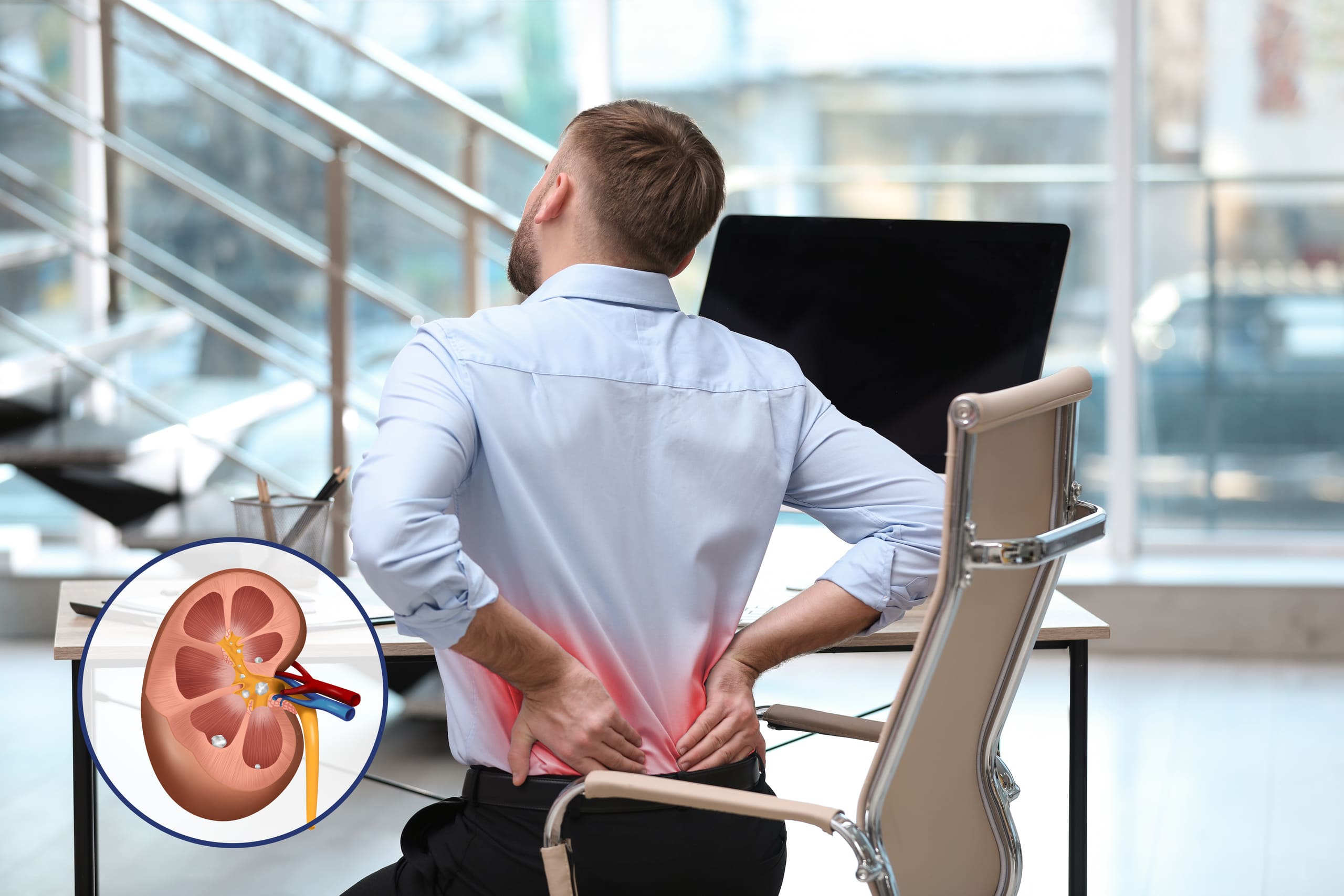Kidney stones are more common than you may think, and if you’ve had one, you know how painful they can be. Dr. Kanu and his patient-centered team at Texas Kidney Partners have put together a guide outlining the warning signs of kidney stones to ensure early diagnosis and treatment, relieving your discomfort and preventing complications. You can count on us for exceptional care with a compassionate touch.
What Are Kidney Stones and How Do They Form?
Kidney stones are hard deposits that develop in the kidneys. They can vary in size from as small as a grain of salt to as large as a pearl or even a golf ball. Smaller ones often pass unnoticed, while larger ones can cause excruciating pain. If lodged in the urinary tract, they can obstruct urine flow and lead to serious complications.
Kidney stones are typically made up of salts and minerals such as oxalate, calcium, and uric acid. They form when there’s a decrease in urine or an excess of certain minerals and salts, allowing these substances to crystallize and stick together. Risk factors include dehydration, a family history of kidney stones, medical conditions such as gout or urinary tract infections, a diet high in sodium, animal proteins, or sugar (especially fructose), or inadequate calcium intake in some cases. Kidney stones, left untreated, can lead to serious complications, including chronic kidney disease (CKD).
What Are the Main Types of Kidney Stones?
The following are the main types of kidney stones:
- Calcium Oxalate Stones: These are the most common type of stones that form when calcium in the urine combines with oxalate, a substance produced by the liver and found naturally in many foods.
- Calcium Phosphate Stones: These calcium-based kidney stones form when calcium combines with phosphate and are less common than calcium oxalate stones.
- Uric Acid Stones: These kidney stones form due to too much uric acid in the urine, resulting from a high-protein diet, gout, dehydration, or certain genetic factors.
- Struvite Stones: These fast-growing kidney stones are formed from a combination of magnesium and phosphate and are usually associated with urinary tract infections (UTIs).
- Cystine Stones: Cystine stones are rare and typically result from a hereditary disorder called cystinuria, which causes high levels of the amino acid cystine in the urine.
What Are the Most Common Warning Signs of Kidney Stones?
Warning signs of kidney stones may vary depending on their location and size. The following are some of the most common warning signs:
- Pain that can be severe, often in the side or lower back, and may radiate to the lower abdomen and groin area
- Blood in the urine that appears pink, red, or brown
- A frequent urge to urinate
- Painful urination or a burning sensation
- Difficulty urinating or only passing small amounts
- Cloudy urine or an unpleasant odor
- Nausea and vomiting
- Fever, chills, and profuse sweating
While these symptoms may not always indicate kidney stones, it’s important to seek prompt medical attention to avoid complications.
How Are Kidney Stones Treated?
Dr. Kanu will recommend treatment based on the type and size of your kidney stone. In general, smaller stones require conservative treatment and management. Increased water intake dilutes your urine and helps the stone pass naturally, while over-the-counter pain relief medications can help manage mild to moderate pain. Dr. Kanu may recommend stronger pain medication in some cases. He may also recommend alpha-blockers to relax the muscles in the ureter, making it easier and less painful for the stone to pass.
A kidney stone that’s too large to pass can cause a host of complications, such as severe pain, bleeding, ongoing urinary tract infections, and even kidney damage. The following are some of the treatment options for larger kidney stones:
- Extracorporeal Shock Wave Lithotripsy (ESWL): The non-invasive, outpatient procedure involves the use of sound waves to break down the kidney stones into smaller pieces that can pass more easily.
- Ureteroscopy: A thin, flexible telescope with a camera (ureteroscope) is inserted through the urethra, bladder, and ureter to reach the stone and retrieve it or break it down into smaller pieces using a laser.
- Percutaneous Nephrolithotomy (PCNL): This surgical procedure involves making a small incision and inserting a thin camera called a nephroscope into the kidney to locate and remove the stone or break it down into smaller pieces.
Dr. Kanu will discuss the best treatment options to provide you with prompt relief.
How Can You Reduce Your Risk of Future Kidney Stones?
The following are ways to lower the risk of kidney stones:
- Increase your water intake.
- Limit your sodium intake.
- Be mindful of foods rich in oxalates.
- Consume animal protein in moderation.
- Maintain adequate calcium intake from healthy food sources.
- Increase your intake of citrus fruits, which help prevent stone formation.
- Engage in regular exercise and maintain a healthy weight.
- Limit drinks high in sugar, especially fructose.
Kidney Stone Treatment and Care Near Me in McKinney
If you’re dealing with kidney stones, Dr. Kanu and his team at Texas Kidney Partners are here to help. We are committed to providing personalized, compassionate care tailored to your needs. We strive to relieve your discomfort and safeguard your kidney health. Contact us at 469-613-2343 to schedule a consultation, or complete our online form to request an appointment today!

